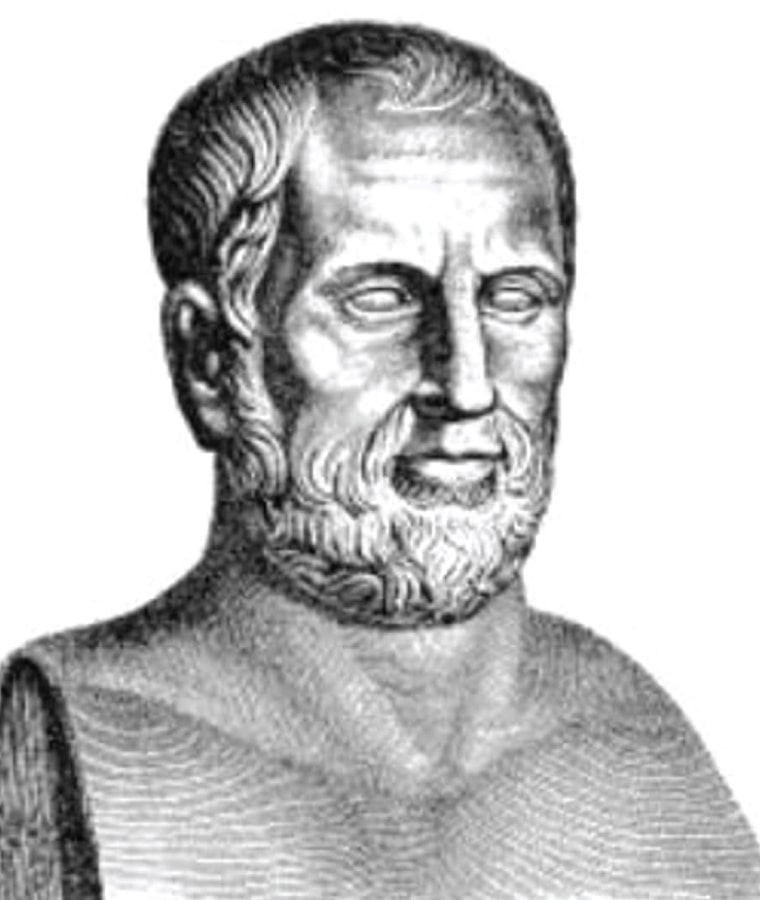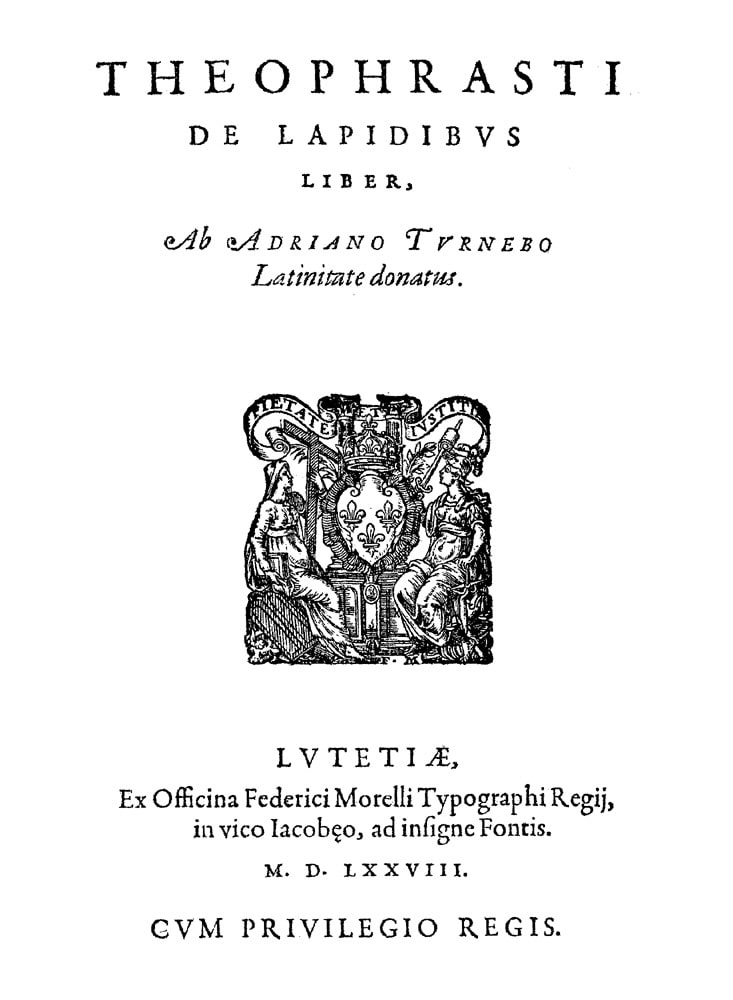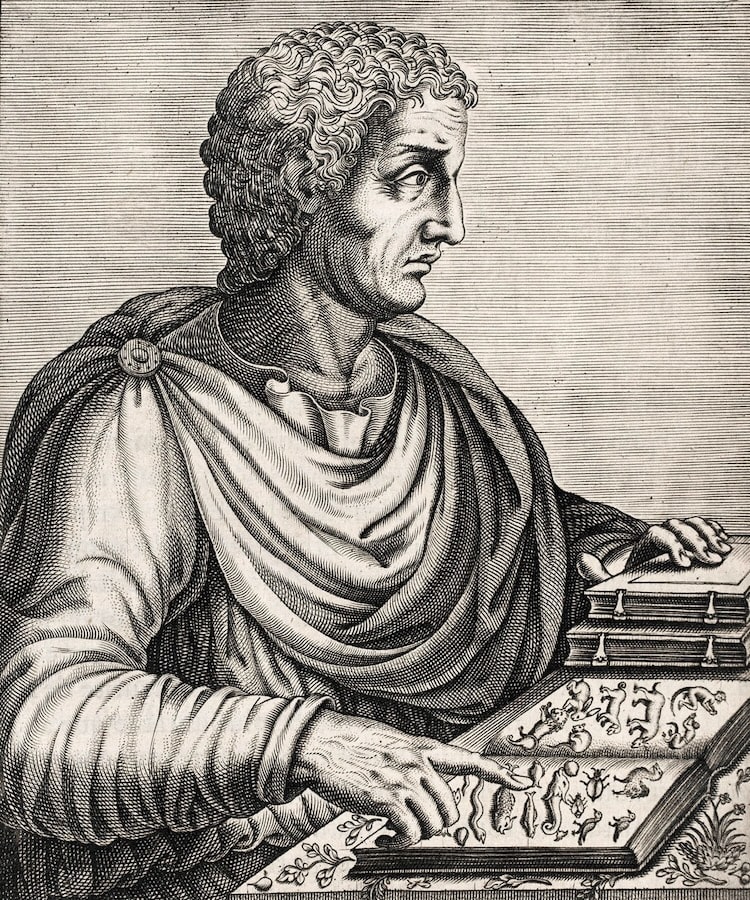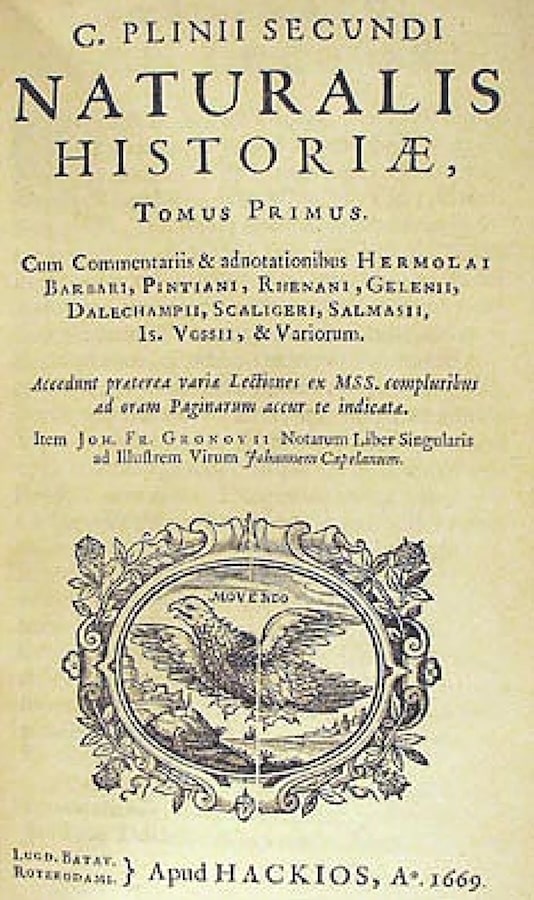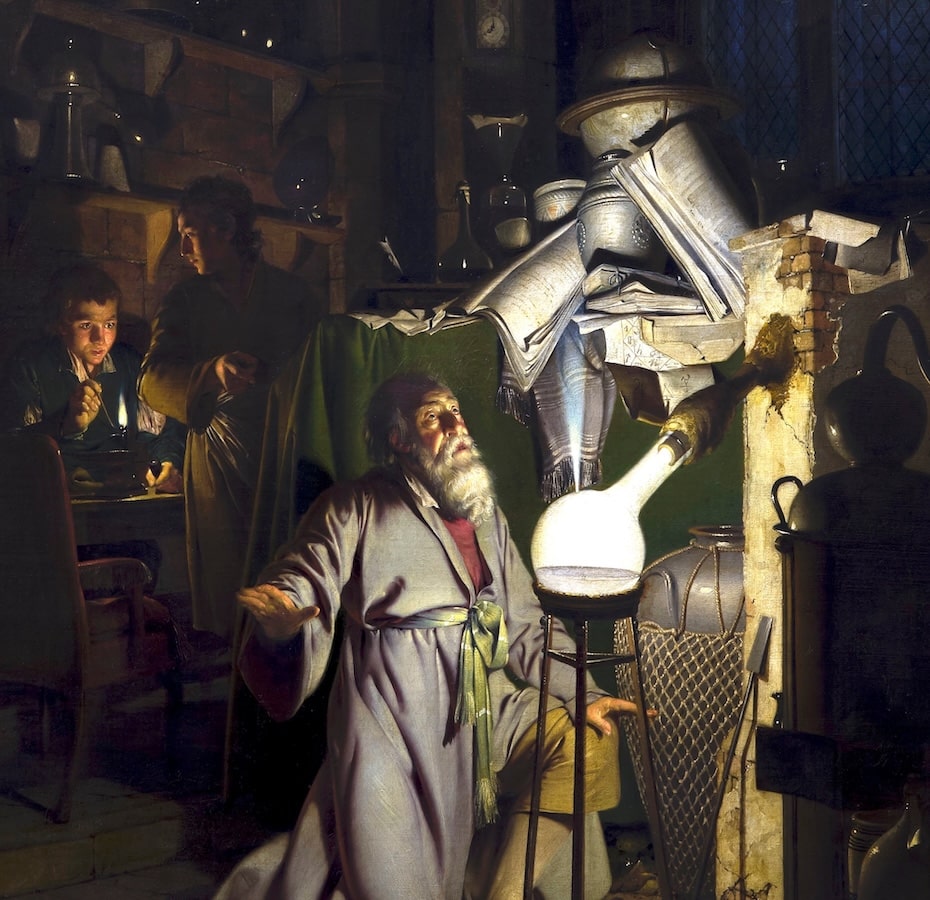Theophrastus (371 B.C. – 287 B.C.), Greek philosopher, and the title page of his work De Lapidibus (Latin edition, 1578) ("On Stones") – a work in which Theophrastus classifies rocks and gemstones by common properties, and for the first time describes crystal forms and highlights the appearance of flat faces and edges on crystals.
Theophrastus classified rocks and gemstones based on their behavior when heated, further grouping minerals by common properties, such as amber and magnetite, both of which have attracting power. Theophrastus describes various marbles, mentions coal, which he says is used by metalworkers for heating, describes various metal ores, and was aware that pumice stone was of volcanic origin. He also studied precious stones, emeralds, amethysts, onyx, jasper, etc., and described various "sapphires" which were blue with golden veins, probably referring to lapis lazuli. He knew that pearls came from shellfish, that coral came from India, and spoke of fossilized remains of the organic world. He also considered the practical use of various stones, such as minerals needed for the production of glass and plaster, as well as for making various pigments like ochre.
Theophrastus classified rocks and gemstones based on their behavior when heated, further grouping minerals by common properties, such as amber and magnetite, both of which have attracting power. Theophrastus describes various marbles, mentions coal, which he says is used by metalworkers for heating, describes various metal ores, and was aware that pumice stone was of volcanic origin. He also studied precious stones, emeralds, amethysts, onyx, jasper, etc., and described various "sapphires" which were blue with golden veins, probably referring to lapis lazuli. He knew that pearls came from shellfish, that coral came from India, and spoke of fossilized remains of the organic world. He also considered the practical use of various stones, such as minerals needed for the production of glass and plaster, as well as for making various pigments like ochre.
